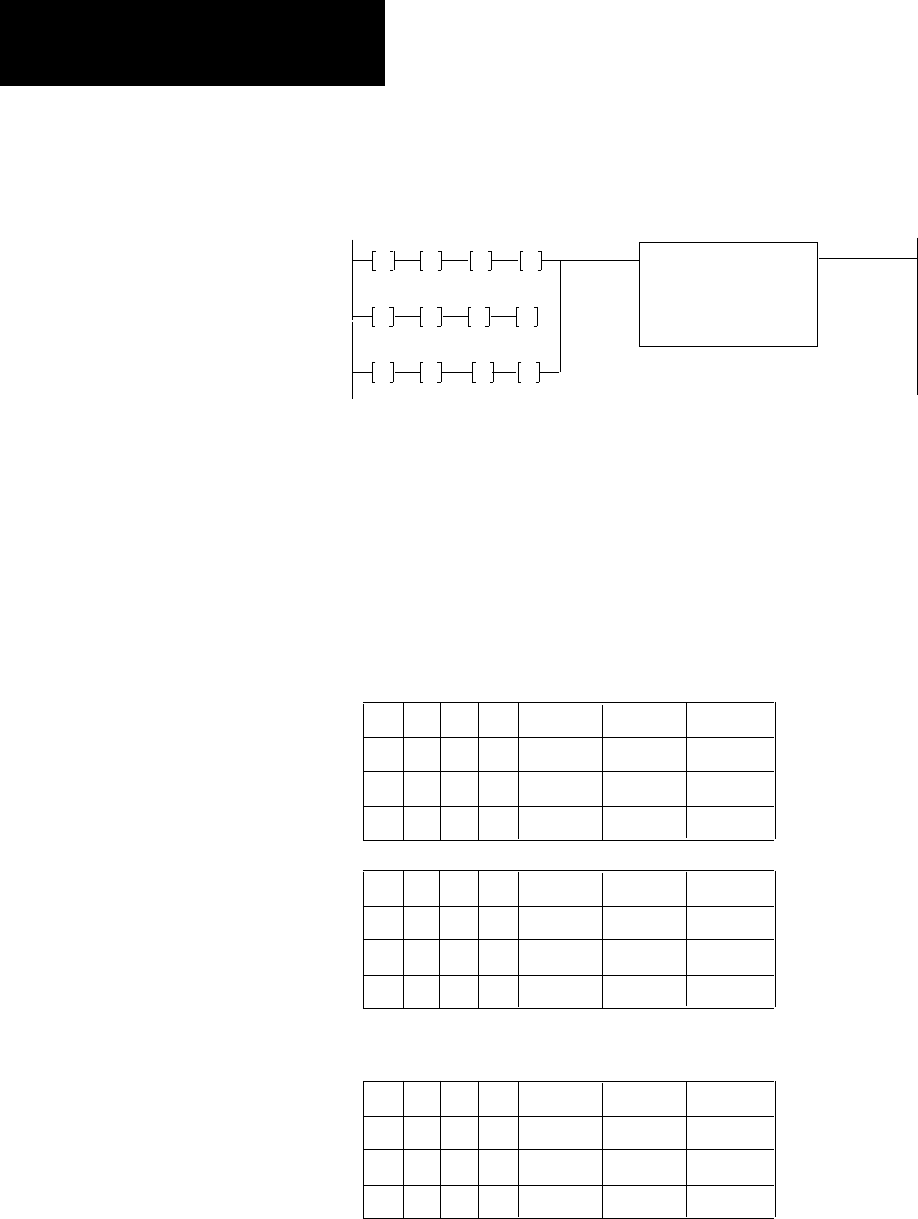User Manual Owner's manual
Table Of Contents
- 1772-6.5.8, Mini-PLC-2/02, -2/16, -2/17 Processor, User Manual
- Important User Information
- Summary of Changes
- Table of Contents
- 1 - Using This Manual
- 2 - Fundamentals of a Programmable Controller
- 3 - Hardware Features
- 4 - Installing Your Programmable Controller
- 5 - Starting Your Processor
- 6 - Maintaining and Troubleshooting Your Processor
- 7 - Memory Organization
- 8 - Scan Theory
- 9 - Relay-Like Instructions
- 10 - Program Control Instructions
- 11 - Timers and Counters
- 12 - Data Manipulation and Compare Instructions
- 13 - Three-Digit Math Instructions
- 14 - EAF Math Instructions
- 15 - EAF Log, Trig, and FIFO Instructions
- 16 - EAF Process Control Instructions
- 17 - Jump Instructions and Subroutines
- 18 - Block Transfer
- 19 - Data Transfer Instructions
- 20 - Bit Shift Registers
- 21 - Sequencers
- 22 - Selectable Timer Interrupts
- 23 - Report Generation
- 24 - Program Editing
- 25 - Programming Techniques
- 26 - Program Troubleshooting
- A - Specifications
- B - Processor Comparison Chart
- C - Number Systems
- D - Glossary
- E - Quick Reference
- Index
- Back Cover

EAF Math Instructions
Chapter 14
14-10
Figure 14.8
EAF
Power Function Input and Display Rungs
060
EXECUTE AUX
FUNCTION
FUNCTION NUMBER:
DATA ADDR:
RESULT ADDR:
33
040
060
G
061
032
G
062
000
G
063
000
G
040
G
041
005
G
042
000
G
043
000
G
050
000
G
051
G
002
052
000
G
053
000
G
000
000
Enter the values for the base and the exponent. Entry of y = 2 in word 050
and x = 5 in word 041 produces the result 32. Figure 14.9 shows how the
words are stored in the data table. If a result has numbers beyond 12
digits, the result is truncated.
Figure 14.9
EAF
Power of Y Format in the Data Table After Execution
10352-I
X000
17 16 15 14 107 4313
0
0
0
5
00
00
0
0
0
00
00
0
2
0
0
00
00
32
Data
0
040
041
042
043
050
051
052
Result
Address
060
061
062
063
053
0
0
0
0
0
0
0
0
0
0
0
0
0
00
Address
Operand A
Operand B
Result
When a processor executes an EAF, it uses the data table format shown in
Figure 14.10. The Operand represents a number you are going
to manipulate.
One Operand EAFs










